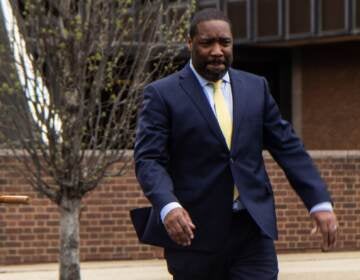The top five Philly planning politics fights of 2014
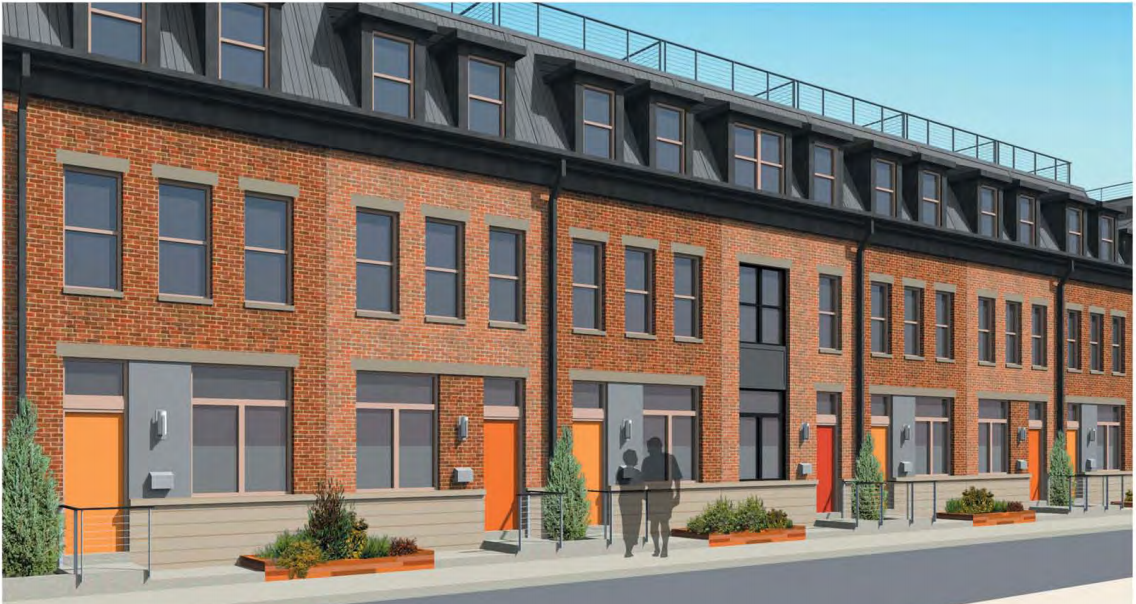
As 2014 winds down and the 2015 campaigns begin heating up, it’s a good time to step back and reflect on the current moment for our little area of politics, and what’s at stake for the issues PlanPhilly readers care about.
Here are our top five picks for the big moments in 2014 planning politics that we think had the biggest impact on the political environment heading into this election season. These are events that either set the table for Council races, introduced new campaign issues, or otherwise brought together groups of voters and activists in ways that increased their political power.
Tell us in the comments: What do you think mattered the most to planning politics this year? What are we missing?
2010 WHARTON (AND THE WHOLE SLEW OF OCF REALTY DEVELOPMENTS IN POINT BREEZE)
Let’s take the most obvious one first. The 2nd District City Council primary contest between the incumbent Councilman Kenyatta Johnson and his challenger, developer Ori Feibush, is all about land use and planning politics.
Ori Feibush is a developer who is frequently in conflict with Councilman Johnson’s office over infill development projects he’s pursuing in Point Breeze, and he’s largely running for the seat to change the political direction and make it easier to build new infill housing and mixed use projects in the District.
2010 Wharton and 2012-2020 Wharton were the largest disputed projects in Point Breeze this year (22 homes proposed for 2010 by OCF, and 48 single family homes by JKR Partners on the industrially-zoned block at Wharton and 20th streets) but the same underlying conflict of visions for redeveloping the neighborhood has been playing out across many other projects for several years now, most of which involving OCF Realty since they’re the most prolific developer and broker in the neighborhood.
In short: Councilman Johnson wants to preserve more veto points in the land development process—zoning variances and city land sale requests—and the opportunities for haggling over projects they provide between near neighbors and developers, sometimes with an affordability aim, and sometimes not. One of Johnson’s objections to 2012-2020 Wharton, for instance, is the lack of attached parking, which OCF says would increase the price of each home by $25,000.
In Feibush’s preferred framing, Johnson’s opposition to 2010 Wharton and other land sales and variances for OCF projects are politically motivated—a proxy fight that’s sort of a pre-game for the Council primary. But Johnson’s office strongly objects to this interpretation, pointing to 8 city-owned property transfers to OCF approved by Johnson’s office.
The political implications for 2015 are straightforward—whoever wins this primary will set the direction of land use and planning policy in the 2nd Council district (which contains some very strong real estate markets along with some very weak ones) for the next four years.
Jared Brey’s interviews with the two candidates were notable for how clean the contrast was between their visions for the proper role of a District Councilperson in the land development process. Read the interviews (Feibush, Johnson) to get a better feel for the intricacies of their positions, and size up their responses to skeptical questions, but the choice here is pretty clear: Johnson thinks the 2nd District Councilperson should keep being intimately involved in parcel-level negotiations, and maintain a good-sized scope for political discretion even after zoning remapping, while Feibush wants the Councilperson to stop doing that, fit the by-right zoning envelope to what’s economically viable on corridors like Point Breeze Avenue, and generally shrink the scope for parcel-level politicking.
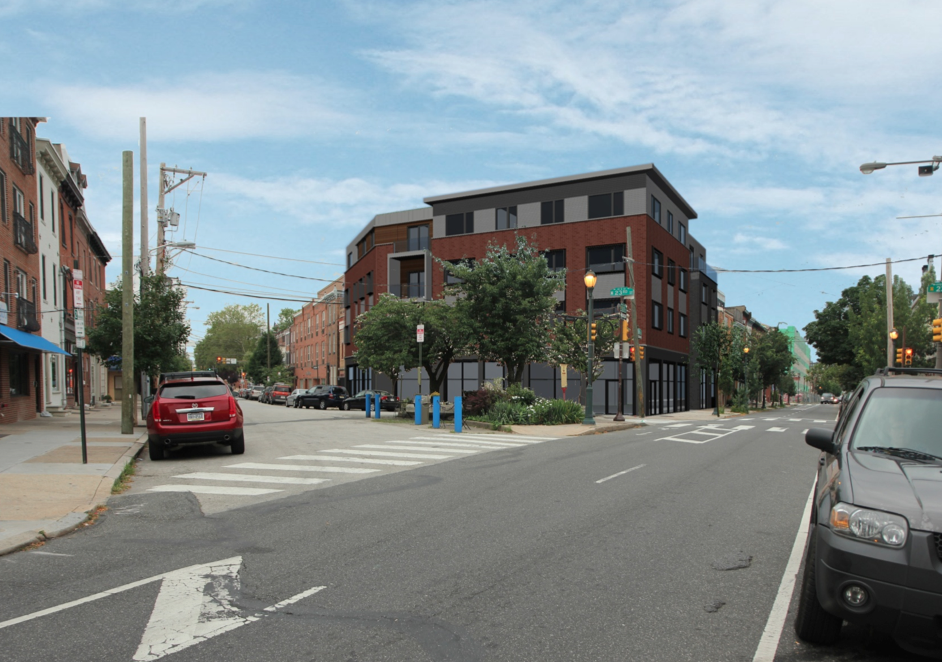
2300 SOUTH STREET
The rejection of developer Jason Nussbaum’s proposal for a 4-story mixed-use building at the corner of 23rd and South streets, overlooking the new Gray’s Ferry Triangle pedestrian plaza, makes our list because of how it has changed the politics in Southwest Center City in very concrete ways.
For many of the people who had got involved in Graduate Hospital community affairs in recent years, through groups like SOSNA, Friends of Chester Arthur school, and South Street West Business Association, 2300 South was a no-brainer. The 46 foot building with 18 apartments and no on-site parking was consonant with their vision of a low-car walkable neighborhood with sufficient street life to support bustling neighborhood commercial corridors on South and 22nd streets—a break from the street-deadening garage-fronted single-family residences that have inundated the neighborhood over the past decade.
But for many long-time residents, 2300 South was also a no-brainer—an obvious overbuild that was too tall (it’s the same size as the last building that stood there), and would exacerbate the already-tight market for free curb parking.
And they taught the newer residents a lesson about how old Philadelphia exercises political power. Committeewoman Barbara Failer organized some like-minded neighbors in opposition to the project, and Fitler Square resident, former 8th Ward Leader, and current Mayoral candidate Terry Gillen helped orchestrate a lawsuit against the project, according to City Paper.
Gillen maintains that she supports the development of the lot, but only the three-story parking-included building that can be built by-right, not Nussbaum’s proposal. Councilman Kenyatta Johnson’s office wrote a letter favoring the plan, but the Zoning Board of Adjustment ultimately rejected Nussbaum’s variance request, effectively killing the project.
While it’s debatable what was most effective in turning ZBA against the project (Marcus Ferreira of the South Street West Business Association has pointed out that the case came before the Board right after a flare-up of critical media coverage highlighting the high rate of variance approvals even after the 2012 zoning reforms) the take-home lesson for many of the newer activists in Graduate Hospital was that they needed to get control of the 30th Ward committee in order to put some oomph behind their vision for the neighborhood.
Former Obama organizer and Philadelphia School Partnership staffer TJ Hurst organized a slate of 22 candidates for the 34 Ward Executive Committee slots, and though he lost his own bid for a committeeperson seat, Hurst-affiliated candidates ended up winning 12 seats—just shy of the majority they needed to take the ward. The group has since established a 30th Ward PAC to support endorsed candidates, and Hurst was recently hired as the political director of the unnamed Zuritsky PAC that will focus on electing younger business-friendly candidates to City Council over the next few cycles.
(Full disclosure: I won a committeeperson election this May, but in the 2nd ward.)
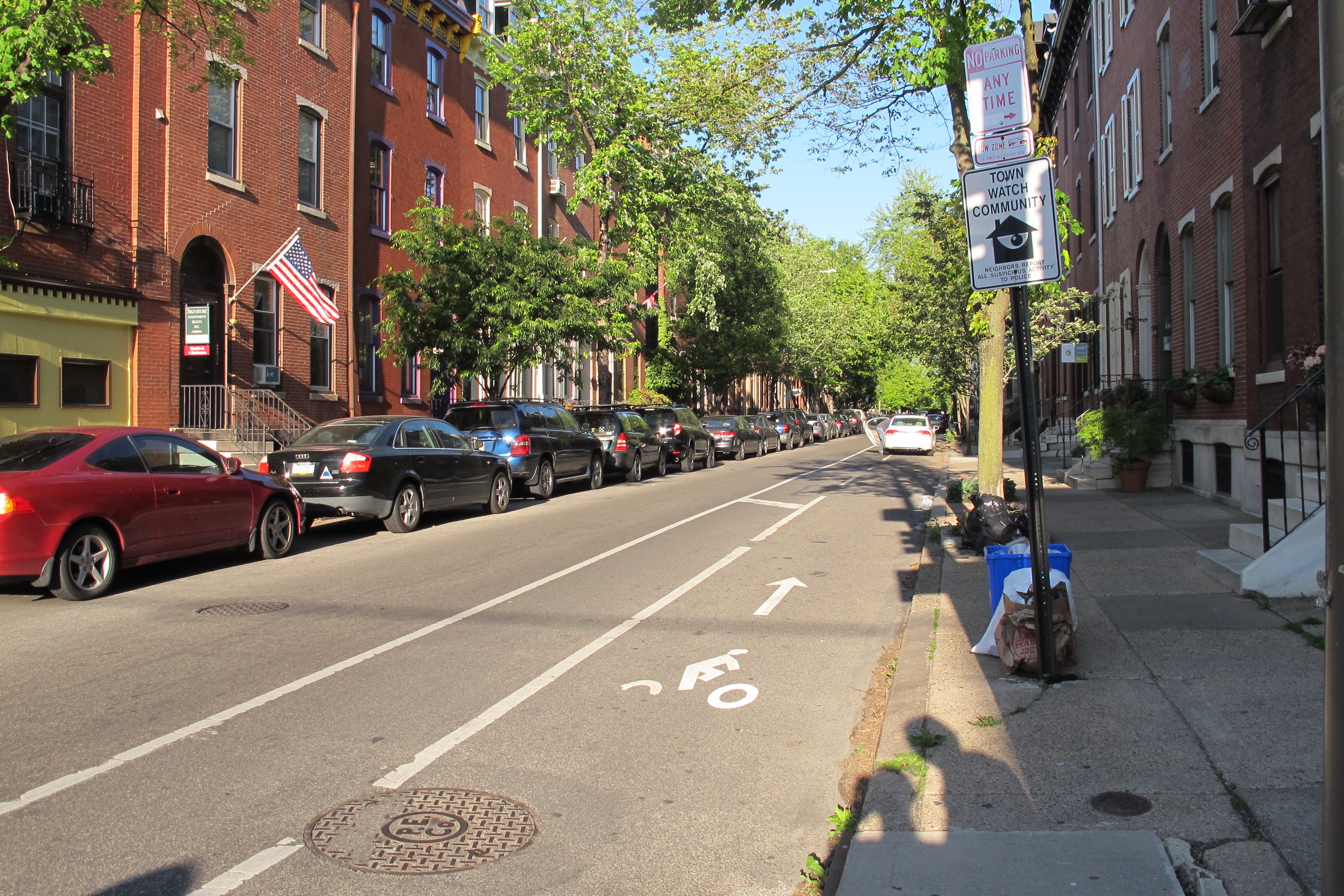
22ND ST BIKE LANE
The bike lane proposed for the stretch of 22nd Street between Spring Garden Street and Fairmount Avenue was one of the first big tests of whether City Council would actually play by the rules they laid out in 2012 when they grabbed control of bike lane approvals in cases where a travel lane or a parking lane would be removed.
That law made Philadelphia the only big city in the U.S. where bike lanes require a Council ordinance, and bike advocates predicted at the time that it would have a chilling effect on the creation of new lanes, when Philly’s bike lane installation rate already lags behind most of our peer cities.
The Nutter administration has already plucked most of the low-hanging fruit from streets with sufficiently wide cartways to stripe bike lanes without taking away parking or travel lanes, and henceforth, the creation of new dedicated lanes will typically require precisely the type of zero-sum transfers of street space from cars to cyclists that activates the Council approval requirement.
This stretch of 22nd Street was one of the bike lanes still left that wasn’t supposed to require Council support. Officially a one-lane street, it could support a bike lane (an extension of the existing 22nd Street lane that ends on the south side of Spring Garden) without taking away a travel lane.
The problem there is the word “officially.” With the street markings worn off, drivers had grown accustomed to using the street informally as a two-lane street. And that gave At-Large Councilman Bill Greenlee an opening to scuttle the plan. Greenlee is Council’s biggest bike lane opponent (he introduced the 2012 law, which is a compromise iteration of his original proposal requiring Council approval of all bike lanes) and when he heard tell that the Streets Department planned to stripe a lane there this fall, in accordance with the 2012 Pedestrian and Bicycle Plan, he got to work trying to block it.
This episode made our list because it’s a near-perfect distillation of the attitude that planning reformers and the Nutter administration have been fighting against since the beginning. Preference for hunch-based reasoning over expert opinion from city planners and traffic engineers? Check. Swaggering disregard for officially adopted Planning Commission plans? Check. Last-minute reactive decision-making over long-range planning? Check.
Greenlee isn’t likely to pay an electoral price for his intransigence—his Earned Sick Days legislation will likely pass this spring, bolstering his reputation with liberals—but the episode has served as an alarming reminder to planning reformers that the Nutter administration’s multi-modal transportation agenda is far from settled policy, and is quite possibly in jeopardy in the 2015 Democratic primaries.

POP-UP BEER GARDENS
Millennials finally found a political issue to get exercised about this summer, and to the horror of many of the same people who’d been hectoring them about that for years, that issue turned out to be pop-up beer gardens.
State Rep. John Taylor made headlines looking askance at the loophole that allowed the gardens to operate (stacking their one-day off-premise catering permits for months in a single location) and pledging to tighten the rules so as to prevent the hellscape of outdoor mirth from spreading city-wide next summer.
The blowback was swift and fierce. Taylor said his office received more calls about pop-up beer gardens than any other issue ever, including public education. (Implausibly, Taylor claimed most of the calls were coming from people worried a beer garden might open in their neighborhood.)
What does this have to do with planning? One thread of the planning reform agenda involves increasing the mix and density of activity—filling in vacant lots, or programming them with temporary or permanent community or commercial uses, filling empty storefronts, and so on. Liquor license policy is an under-appreciated policy tool for achieving this aim. Ex-Philadelphian Greg Meckstroth has written about how printing more liquor licenses has helped fill small alley storefronts in Melbourne, Australia, and Philadelphia witnessed how the cheap catering permits allowed for the creation of fun public spaces this summer—not just the fancy ones at PHS South Street or The Oval, but also the parking lot next to Fergie’s Pub.
Rep. Taylor backed off his initial idea of introducing a bill to tighten the law, though when last we left him, he was still intent on persuading the state Liquor Control Board to change their interpretation of the law.
So one reason this dispute made our list was that it was one of the first times younger Philadelphians got engaged on an issue and won (or at least drove Taylor into the LCB’s back room.)
It was also the first brush with a genre of politics that would crop up again this year with the taxi medallion fight: the bitter politics of taking on licensing cartels. Ride-sharing proponents and pop-up beer garden fans were both arguing for these services on the basis that, well, they liked them. But for the owners of liquor licenses and taxi medallions (and some friendly politicians), the popularity of these services is a moot point, necessarily second to defending government supply restrictions and high prices for their assets.
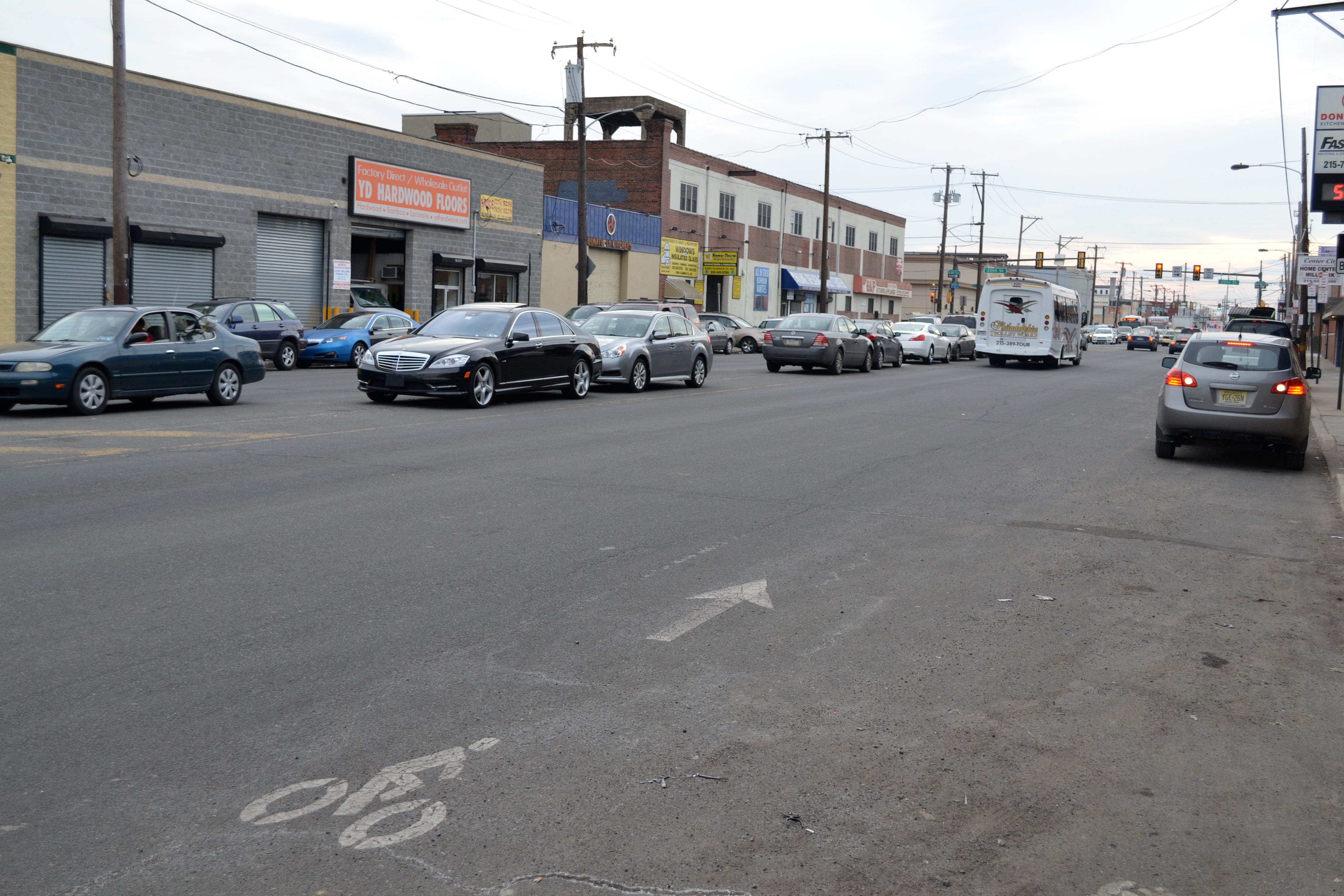
WASHINGTON AVE RESTRIPING/MEDIAN PARKING
This issue mostly flew under the radar this fall, but neighborhood activists in Bella Vista, Graduate Hospital, Newbold, and Passyunk Square succeeded in persuading Councilmen Mark Squilla and Kenyatta Johnson to get the Philadelphia Parking Authority to enforce the ban on parking in the median of Washington Avenue. (Full disclosure: I was involved with this effort in my capacity as a Bella Vista Neighbors Association board member).
But it’s been one step forward, one step back as the two Councilmen have also been slow-walking the introduction of the bill needed to complete the lane restriping plan for Washington Avenue that Ashley Hahn wrote about back in October.
Restriping was supposed to be done already this fall, and the least controversial parts have been, but some Washington Ave business owners have problems with other aspects of the plan, and so the neighborhood is now relitigating the community process that was officially completed earlier this year.
At issue are the number of loading spaces but also the lane reductions from five lanes to three, and the restriping of the bike lanes. Washington already has bike lanes, officially, but the lane markings have been so faded for so long that nobody remembers them.
We’re now hearing the Councillors are worried they’ll be blamed in the event that, contrary to the Planning Commission’s projections, the lane reductions slow down traffic or cause unexpected disruptions. They see no downside to taking no action, since they won’t be blamed if the Avenue remains in its familiar failed state.
The Washington Ave right-of-way issues made our list for a few different reasons. One is that Washington Avenue is just really important. Currently it acts more like a dingy and dangerous barrier between Center City and South Philly than a connector knitting these places together. Done well, the street restriping plan and the South District comprehensive planning and rezoning process could do a lot to reverse this.
Another reason is that the episode shows both the promise and the limits of neighborhood and online organizing.
The median parking ban enforcement feels like a small miracle. Like its cousin, Broad Street median parking, median parking on Washington seemed like an obviously dangerous-yet-immovable fixture of the South Philadelphia transportation ecosystem, with all the trappings of a classic Third Rail political issue. It might help everybody in the area in a diffuse way, but they care a lot less (and call their Councilman a lot less) than the handful of people with something to lose, and the squeaky wheels get the grease.
And yet, it turned out that all anybody had to do was ask the Councilmen to enforce the ban (in a public meeting, and then send them lots of photos via Facebook of people still parking there with impunity.) There wasn’t really any organized group on the other side of the issue to defend the tradition. And it also didn’t hurt that nobody knew the directive came from the Councilmen, with the already-unpopular PPA there to play the foil.
The lane reduction politics aren’t like that. The same neighborhood activists supporting the median parking enforcement have also made their opinions known in community meetings and online forums, in support of doing the lane restriping plan as proposed. But in this case, there is a real counterweight—some Washington Avenue businesses, many of whom are under the misimpression that the restriping is all about making space for bikes, have also been making their displeasure known in these same community forums.
In this situation, the lines of accountability are more direct (everybody knows who gets to make the call, and the Councilmembers actually have to introduce a bill rather than just email Corinne O’Connor at the PPA) and there’s a chance that if there is political blowback, it could actually have electoral ramifications—at least on the western side of Broad Street.
WHYY is your source for fact-based, in-depth journalism and information. As a nonprofit organization, we rely on financial support from readers like you. Please give today.




